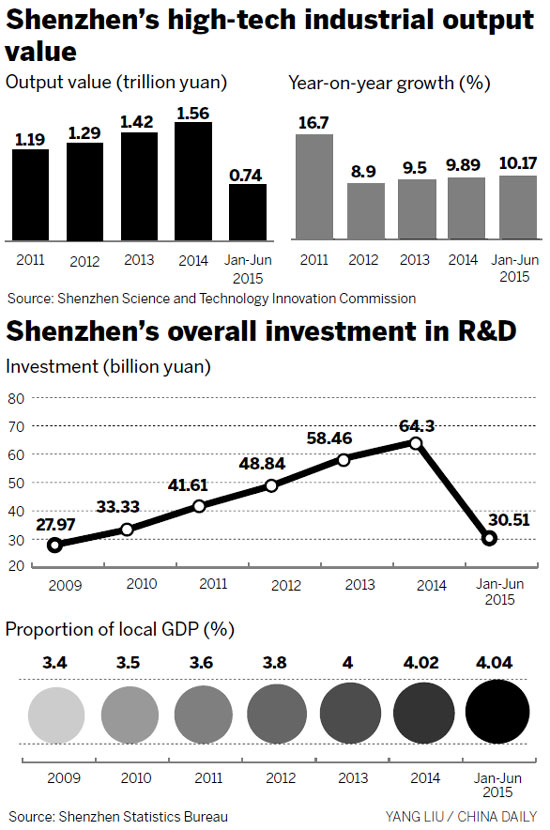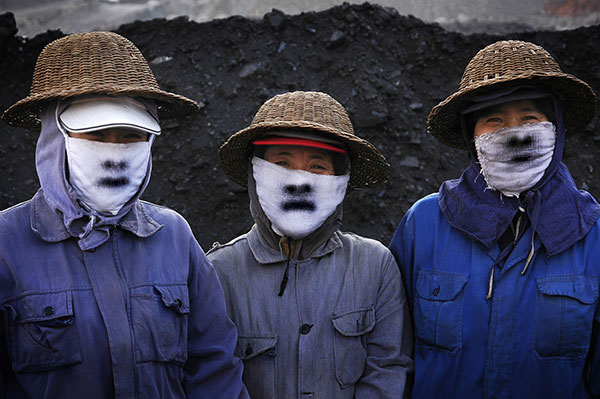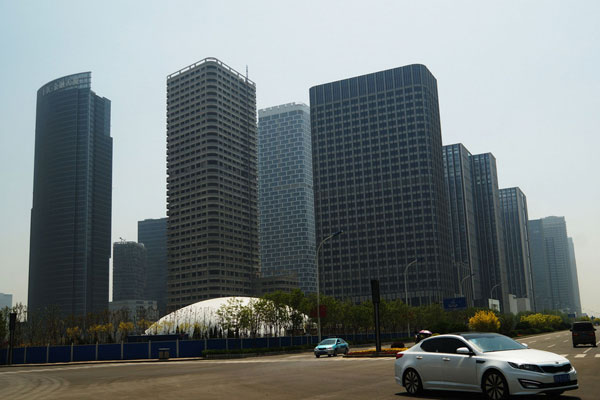Entrepreneurship sets high standard for Shenzhen's future
Updated: 2015-08-31 10:06
By Qiu Quanlin in Shenzhen(China Daily)
|
|||||||||||
 |
"We are developing the local economy by relying more on quality rather than speed," Zhang said.
According to the local statistics bureau, Shenzhen's high-tech industries have grown rapidly, with the industrial output value increasing 10.2 percent year-on-year to reach 739.24 billion yuan in the first half of this year.
Lu Jian, director of Shenzhen Science and Technology Innovation Commission, said boosted efforts in research and development would help upgrade the industrial structure of Shenzhen.
"Unlike most cities such as Beijing and Shanghai, Shenzhen's investment in research and development is mainly from companies, rather than higher education authorities or science and technology institutes," said Lu.
"Companies in Shenzhen are in need of innovation, after decades of development relying on labor-intensive manufacturing and trade," Lu said.
For example, Huawei currently has about 170,000 employees in its global offices, of which nearly half are engaged in research and development, according to Lu.
"That well explains why Huawei invested a huge amount of money in research and development, which has already become a core driver of the company's business growth," he said.
Up to 90 percent of investment and personnel in research and development in Shenzhen are from companies, which have generated more than 90 percent of the city's patented products, said Lu.
Shenzhen's investment in research and development would account for 4.25 percent of its economy by 2020, helping make the city a leading global player in innovation development, Lu said.
Currently, only Israel and South Korea's investment in research and development surpassed 4 percent of their economies, according to Lu.
Gao Guohui, deputy secretary-general of Shenzhen government, said: "Traditional processing and manufacturing business has changed fundamentally since we introduced an overall plan to upgrade the industries by attaching priority to innovation in the late 1990s."
According to Gao, a growing number of traditional manufacturing businesses in Shenzhen have been well upgraded with innovative technologies.
"Manufacturing businesses, although they are not directly engaged in the information and technology sector, are using innovative technologies in their processing facilities," said Gao.
Still, Shenzhen produces more than 80 percent of frames for glasses in the world. "Shenzhen has formed new competitiveness in its manufacturing sector as local industrial players upgrade their traditional processing businesses by attaching more importance to innovation," Gao said.
qiuquanlin@chinadaily.com.cn
Related Stories
Sputtering growth engines cast shadow on full-year economic prospects 2015-08-13 07:13
China's industrial output up 6% in July 2015-08-12 14:35
Weak industrial profits require continuity of pro-growth measures 2015-07-29 16:33
China's H1 industrial output up 6.3% 2015-07-15 15:05
China's Q1 industrial output up 6.4% 2015-04-15 10:36
Today's Top News
Hundreds die as desperate migrants head for Europe
Why China will have a 'soft' landing
All creatures great and small help keep V-Day parade safe
Class: Worlds apart, but
learning together
Ministry denies troops sent to reinforce DPRK border
Property investment rules eased
Apple may launch new iPhones at Sept 9 event
Hungary scrambles to confront migrant influx
Hot Topics
Lunar probe , China growth forecasts, Emission rules get tougher, China seen through 'colored lens', International board,
Editor's Picks

|

|

|

|

|

|






